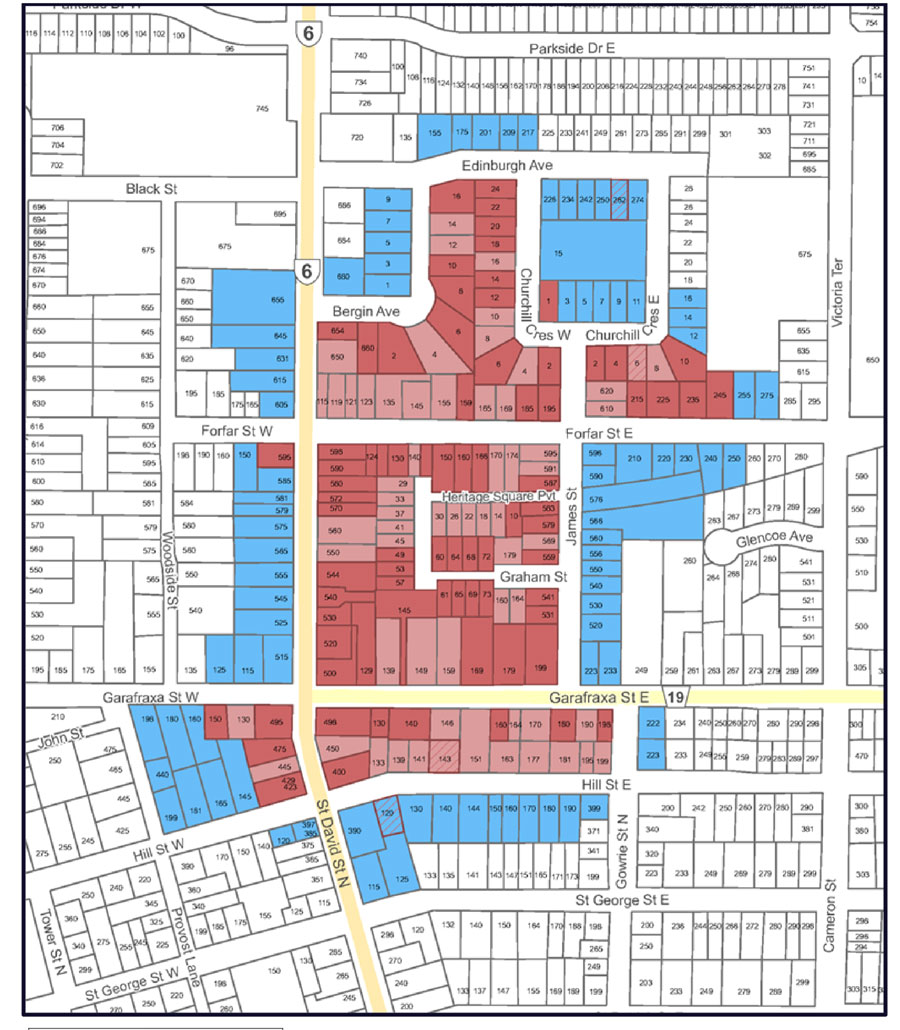CENTRE WELLINGTON – It will come as a relief for people who live in the termite zone that the township will be taking on termite management rather than leaving individuals to deal with termites on their own.
A study done in 2020 indicates there are 259 homes in Fergus and Elora in the “red zone” with active termites and another 219 in the “blue zone,” which is a buffer around the red zone.
At the June 26 meeting, council agreed to engage two termite subject experts to help Centre Wellington staff as they prepare to put out a Request for Proposal from termite control companies.
That’s positive news but also leaves gardeners in both the red and blue zones to fend for themselves for another season.
So here’s what you can do now to stop the spread of termites and prepare for when treatment comes.
The termites in Centre Wellington are eastern subterranean termites that live underground and feed on wood. They prefer dark, damp conditions and build shelter tubes to travel above ground and work their way into homes.
They forage the yard first and then find their way into the home, so the first rule of gardening in the termite zone is to eliminate dead wood, tree stumps, and other habitat on a property.
That could also include removing vines that climb up the walls of your house, getting rid of that cool piece of driftwood, or that old wooden wagon wheel.
Don’t plant anything too close to your house. This makes it easier to find shelter tubes when doing an inspection, and also helps with air circulation and allows the sun to dry the soil creating a less hospitable environment for termites.
As well, because of the treatments and the poison it injects into the soil, place vegetable gardens far from treatment areas.
Eradication program
The City of Guelph started a termite eradication program in 2007 and offers this advice on its website:
– decks and porches must be raised off the ground using a minimum of six inches of concrete;
– wood elements between six and 18 inches above ground must be pressure-treated;
– the bottom step of stair stringer must rest on concrete;
– treat fence posts with borate rods;
– use something other than wood for all retaining walls;
– raise and stack firewood and lumber off the ground;
– consider using a using a metal rack, concrete pad, or patio stones for storing firewood;
– place firewood in the sun away from the house;
– raise wooden sheds off the ground;
– do not use a wooden floor for a shed;
– use something other than wood for fence posts, or support pressure-treated wood posts using metal brackets;
– consider metal, vinyl or bamboo fences instead of wood;
– for wood fences, use pressure-treated posts supported on metal post brackets;
– for best results, set brackets in concrete;
– live trees are usually not infested, but dead trees or a heavily infested live tree should be cut down, the stump excavated or chipped, and the chippings removed; and
– make sure downspouts flow water away from the house; clean your rain gutters.
The matter of mulch
Termites feed on wood, not bark. And while they prefer soft woods like pine and spruce and hardwoods like aspen, they aren’t that particular. So when it comes to adding mulch to your garden, stay away from cedar mulch, black, red, or yellow colour enhanced mulch, and wheat straw.
What you can use: bark mulch, pine bark nuggets, cocoa shell mulch, decorative landscape stone, rubber mulch, peat moss (mix in soil), coffee bean husk (mix in soil), coconut husk/coir (mix in soil).
Don’t share plants if you live in the termite zone either. You just don’t know what you might be passing along.
According to the township, residents who know they have termites and that need to remove wood from their property, should contact the township’s building division to set up an inspection of the material.
Once the material is inspected, the homeowner will be advised on how to dispose of it.
Residents can also check out the termite maps to see where termites have been detected and and how close they are to you.
Visit https://www.centrewellington.ca/en/living-here/pest-control.aspx. Click on ‘Termites’ and then the termite survey report to view the maps.




